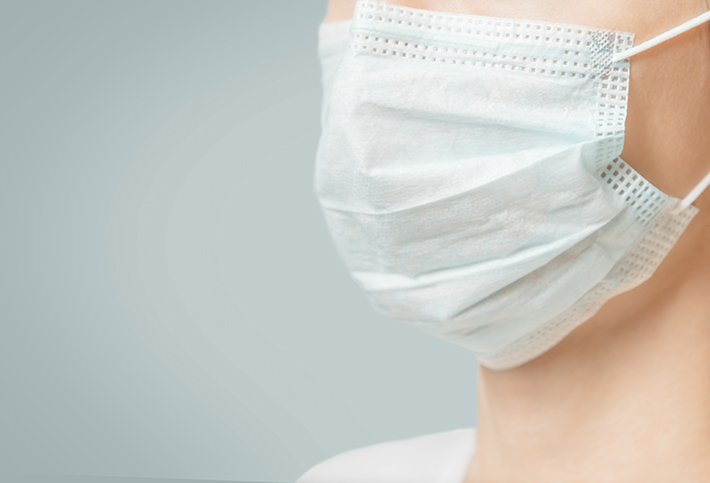
Standards for Medical Face Masks and Protective Clothing
Healthcare workers wear face masks to prevent germs from their noses and mouths from passing to the patient as well as to protect themselves from infection. The scrubs and gowns they wear serve similar purposes, protecting healthcare workers as well as patients from the accidental transmission of disease, as do the drapes that are used during surgery.
In recent weeks, the topic of protective clothing has become very much mainstream, with these products entering broader use outside of hospitals and healthcare facilities in response to COVID-19. Face masks, gowns, and other articles of protective clothing are in high demand as people seek to avoid spreading or contracting the novel coronavirus.
All of these products fall under the purview of ASTM International’s committee on personal protective clothing and equipment (F23) and its subcommittee on biological (F23.40). The biological subcommittee develops and maintains standards that are meant to protect healthcare workers or the healthcare environment from biological hazards that can cause infection.
READ MORE: Full List of ASTM International Standards Made Available at No Charge
Sarah Smit, chair of the biological subcommittee, recently identified the most important standards for protective personal equipment (PPE), listed below. These standards are among many that ASTM International has made available at no charge in order to support manufacturers, test labs, health care professionals, and the general public as they respond to the global COVID-19 public health emergency.
1. Specification for performance of materials used in medical face masks (F2100)
According to Smit, medical face mask material performance is based on testing for bacterial filtration efficiency (F2101), differential pressure (EN 14683), sub-micron particulate filtration efficiency (F2299), resistance to penetration by synthetic blood (F1862), and flammability (16 CFR Part 1610). The intended use for medical face masks is to protect the wearer from splashes or sprays during healthcare procedures, as well as keeping large splashes and sprays from the wearer from reaching the environment.

Personal protective equipment has played a key role in the response to COVID-19.
2. Test Method for Evaluating the Bacterial Filtration Efficiency (BFE) of Medical Face Mask Materials, Using a Biological Aerosol of Staphylococcus aureus (F2101)
This standard is important for evaluating the ability of a mask to keep aerosol droplets – caused by talking, coughing, and sneezing – away from the wearer’s mouth and nose. It will also show the mask’s ability to prevent aerosols from the wearer's mouth from reaching the environment. The bacteria used is Staphylococcus aureus, which is attached to liquid droplets with sizes ranging from 0.65–9 microns and above with 3 microns as the mean particle size. A filtration efficiency is then reported: This is the ratio of the amount of bacterial aerosols challenging the mask versus the amount that was able to penetrate the mask.
3. Test method for determining the initial efficiency of materials used in medical face masks to penetration by particulates using latex spheres (F2299/F2299M)
A standard that has received a great deal of attention in worldwide media recently, this test measures the sub-micron particulate filtration efficiency, and is required for medical face masks in case healthcare procedures generate small particles. Per FDA guidance, the particle size is 0.1 microns and the particles are non-neutralized for medical face masks.
4. Test method for resistance of medical face masks to penetration by synthetic blood (horizontal projection of fixed volume at a known velocity) (F1862/F1862M)
This standard applies specifically to the synthetic blood penetration testing that’s designed to mimic the real-world situations in which the masks are used, according to Smith. In this case, the test is designed to determine whether or not the mask would effectively protect a surgeon from blood spatter. Medical face masks are intended to resist liquid penetration based on a number of different factors, including the surface tension and viscosity of the fluids themselves, as well as the structure and relative hydrophilicity or hydrophobicity of the materials and the design of the mask itself. F1862 sets the standard for this type of testing as well as for the creation of the synthetic blood used in the test.
5. Test method for resistance of materials used in protective clothing to penetration by blood-borne pathogens using Phi-X174 bacteriophage penetration as a test system (F1671/F1671M)
As we are seeing with the the COVID-19 outbreak, viruses can be very resilient, and extensive precautions must be taken to protect medical professionals and patients from potential transmission in a hospital setting. According to Smit, this test is used to determine penetration in protective clothing using a very small virus, the Phi-X174 bacteriophage. This test is particularly sensitive, detecting viral penetration using a biological assay technique where visual penetration may not occur, and is usually performed on surgical gowns. Note: F1670 is similar standard that uses synthetic blood for testing and is a visual penetration test. It is usually performed on drapes.
Tim Sprinkle is a freelance writer based in Colorado Springs, Colorado. He has written for Yahoo, The Street, and other websites.
 SN Home
SN Home Archive
Archive Advertisers
Advertisers Masthead
Masthead RateCard
RateCard Subscribe
Subscribe Email Editor
Email Editor